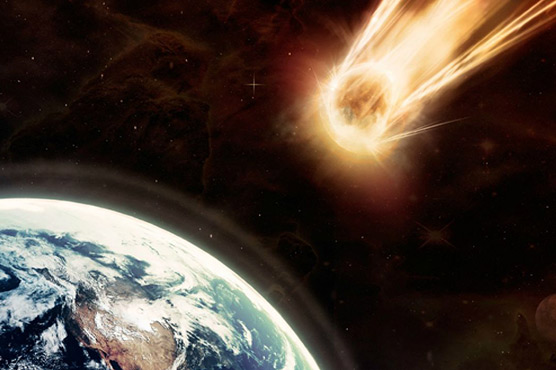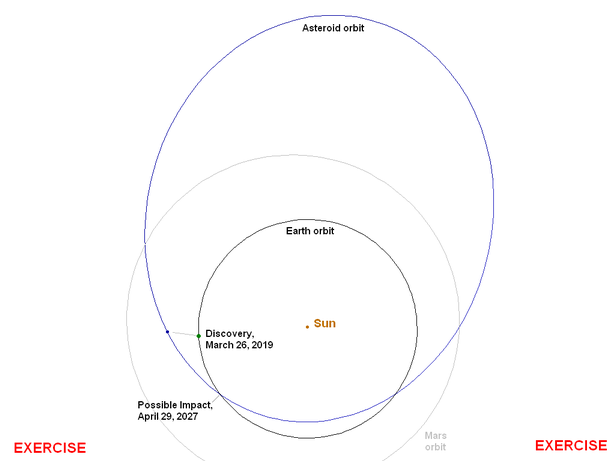NASA to withstand prototype asteroid crash for future

They are also going to try the alternatives if their current efforts fail to stop the collision.
(Web Desk) – The National Aeronautics and Space Administration (NASA) in its ‘tabletop exercise’ is about to mock-up a Washington Monument-sized asteroid crash to prevent the future doomsday destruction.
This is the doomsday scenario that NASA will lay out in its "tabletop exercise" at the 2019 Planetary Defense Conference:
According to a tech website, a scenario has been presented where an asteroid the size of the Washington Monument is heading for Earth, with a 1-in-100 chance of smashing into our planet, and scientists have just eight years to plan and execute a response. The scenario will see a very realistic but nonetheless fictional disaster. The scenario has been developed by one of the NASA organization tasked with studying such near-earth objects, or NEOs.
Participants from NASA’s Planetary Defense Coordination Office and other US agencies and space science institutions, along with international partners, will discuss potential strategies for deflecting or destroying the asteroid.

They are also going to try the alternatives if their current efforts fail to stop the collision.
The aim of the exercise is to investigate how asteroid watchers, space agency officials, emergency managers, decision makers and citizens might respond to an actual impact prediction, and evolving information.
"These exercises have really helped us in the planetary defense community to understand what our colleagues on the disaster management side need to know," said Lindley Johnson, NASA’s Planetary Defense Officer.
"This exercise will help us develop more effective communications with each other and with our governments."
NASA has spent the last 20 years scanning the skies for so-called "near-Earth objects", which are asteroids and comets that orbit the Sun and come within 30 million miles of Earth’s orbit.
The US space agency knows of no asteroid or comet currently on a collision course with Earth, so the probability of a major collision is quite small.
In fact, NASA claims, no large object is likely to strike the Earth any time in the next several hundred years.
However, it wants to be ready to produce the most accurate predictions possible about impact locations and effects, in the event an actual impact threat were discovered.
What NASA has learned from working with the the US Federal Emergency Management Agency (FEMA) is that emergency management officials are not focused on the scientific details about the asteroid.
"What emergency managers want to know is when, where and how an asteroid would impact, and the type and extent of damage that could occur," said Leviticus Lewis of the Response Operations Division for FEMA.
The 2019 Planetary Defense Conference starts on April 29 and lasts until May 3. You can follow along with the developments at every day of the conference here .

